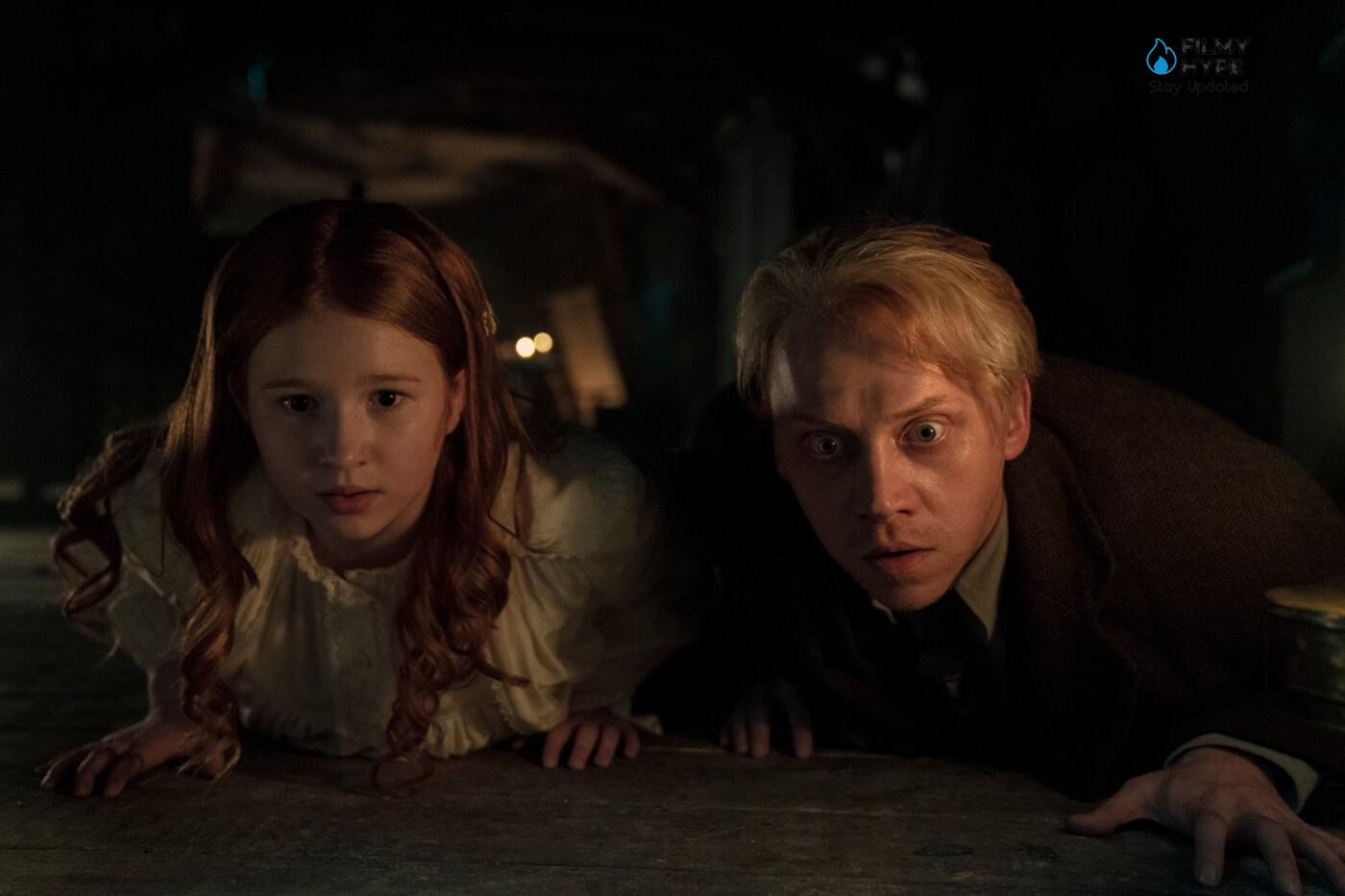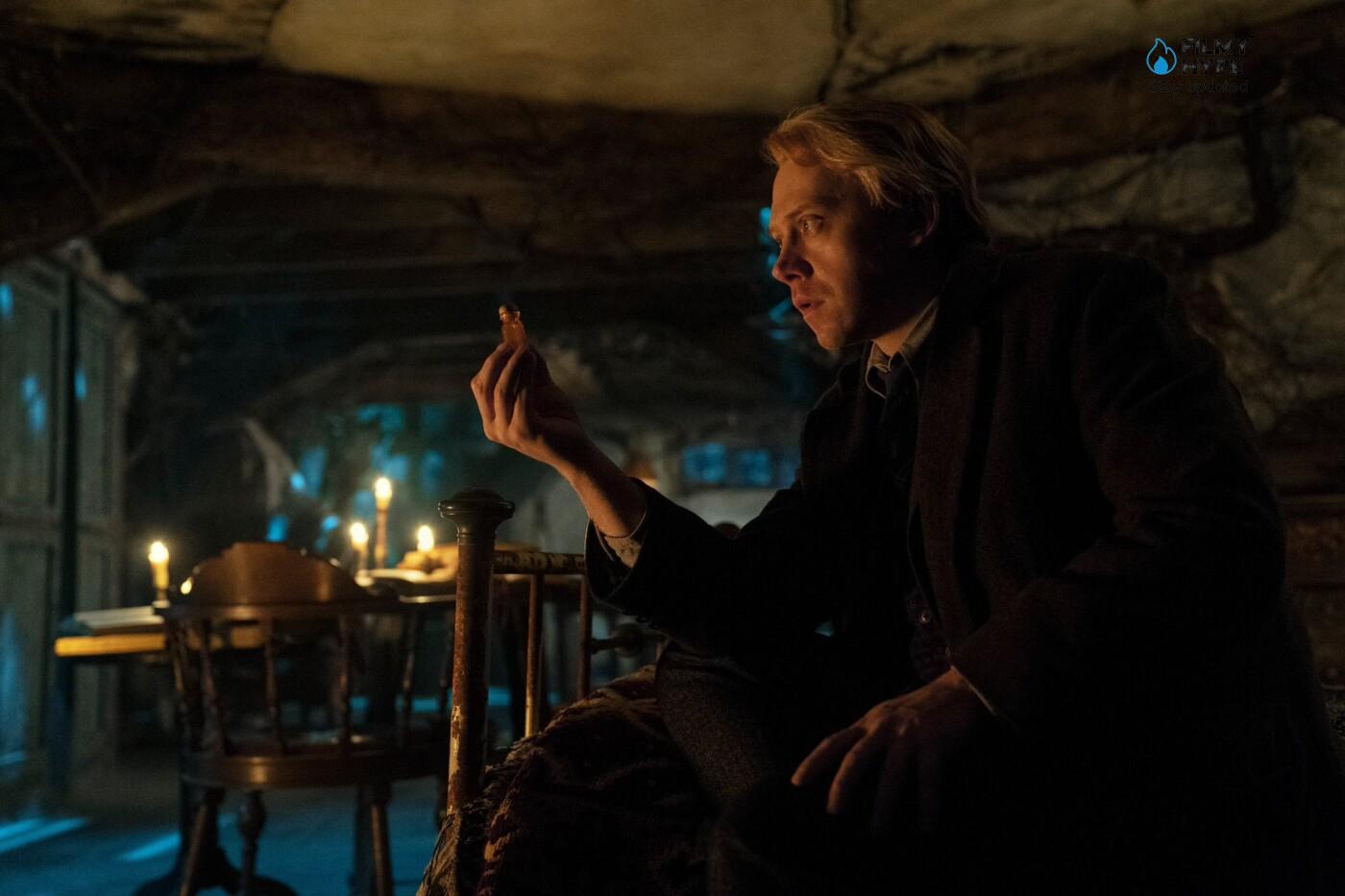Cabinet of Curiosities Episode 6 “Dreams in the Witch House” Review: Between Death, Ghosts and Witches | Guillermo del Toro’s
Cast: Rupert Grint, Ismael Cruz Cordova, DJ Qualls
Director: Catherine Hardwicke
Streaming Platform: Netflix
Filmyhype.com Ratings: 3/5 (three stars) [yasr_overall_rating size=”large”]
This review of Guillermo del Toro’s Cabinet of Curiosities Episode 6 “Dreams in the Witch House” is destined to give you a disappointment: Dreams in the Witch House, directed by the director of Twilight and Little Red Riding Hood Catherine Hardwicke, will strip the story of (almost) all the references related to the cycle of Cthulhu, focusing everything on a story of ghosts, witches and mourning never elaborated, trivializing the whole dream context through a staging that renounces originality. The second part of a diptych that should have stimulated the audience (also about how del Toro himself is pursuing his heart project starting from a short novel by Lovecraft, those Mountains of Madness that seem increasingly distant), The Dreams in the Witch House does not fully convince.

The second of the third couple of episodes of Guillermo del Toro’s Cabinet of Curiosities dedicated to the works of Lovecraft is entitled Dreams in the Witch House, like the eponymous story by the writer written in 1932 and belonging to the so-called Cthulhu Cycle. It is information that we would like to give right away and that would make all fans of the genre happy since you can never get enough of seeing transpositions of stories on the screen that have to do with the Ancients, the book of the dead. Necronomicon and all the nightmare mythology created by the author of Providence.
Cabinet of Curiosities Episode 6 “Dreams in the Witch House” Review: The Story
Walter Gilman (played by a newfound Rupert Grint, the Ron Weasley of the Harry Potter saga, who here, however, gives in to some exaggeration too much) does not rest. Still shocked by his sister’s death, when they were both children, he spent his life chasing potential mediums who could connect with the afterlife so he could contact and bring her back to life, as he promised her years ago. In the meantime, he has thrown away all his talent and his destiny as a good pianist, letting himself go slowly. The opportunity to recover his sister happens almost by chance, when the story of him and that of the painter cross paths, amid strange opiate solutions. Just getting lost in the delusions of the “magic potions”, Walter will discover that the ghost of his sister is alive and tangible, lost in a forest. The existence of a haunted house, belonging to a hag with great and terrible powers, will push him to try everything and everything to achieve his goal. But the night is dark and terrible within the walls of that dilapidated house.
It is a story that, instead of focusing on the oneiric and delusional side, as one would expect from a story based on Lovecraft, writer of nightmares and indescribable abnormality, releases a gothic romanticism, where horror becomes a simple ingredient to come to terms with themselves and their feelings. Not that this should be considered as a defect (indeed, in its way, it is an interpretation that gives a vision that is typical of the director towards the original story): Dreams in the Witch House works in its first half, thanks to a story that is clear in its development and consistent with the staging, and it does not matter if it is more or less faithful to the literary source.
Cabinet of Curiosities Episode 6 “Dreams in the Witch House” Review and Analysis
It is curious how, once past half of the stories that the Cabinet offers us, the anthological operation of the series presented by Guillermo del Toro continues to show less creativity than expected, very often relegating itself to more mainstream and generalist horror canons and formulas, as if the director’s vision could be interchangeable in favour of the search for an audience as wide and heterogeneous as possible. This sixth episode corresponds perfectly to that horror that knows how to create the right atmospheres, takes care of the scenography, and is even capable of giving life to a creature, the witch Keziah, frightening thanks to the prosthetic make-up (and therefore material, tangible, true), but fails to find not only a narrative balance but also a coherence in the staging.
It is a horror that gradually becomes more and more empty and superficial, where the fear of the “unseen” is left aside to bring everything under the eye of the camera, taking away the charm and mystery of the narrative itself. A loss of confidence that affects not only the audience, who seems constantly in need of explanation, explanation and the absence of all that is ambiguous (and consequently creative) but also the filmmakers themselves, who fall badly on using a CGI that breaks the suspension of disbelief (the half man/half mouse Brown Jenkin is truly a failure). The more the story progresses, the more one remains glued to the more obvious and less intriguing surface of the story. At that point even photography based largely on teal and orange is more than an idea of vision, it takes the voice of a digital filter that anaesthetizes everything.

Unlike the previous episode, this one is told more like a black fairy tale. Lovecraft can be breathed, yes, but up to a certain point. What remains for the viewer, except here for the gothic settings, is that classic feeling of mainstream films. The episode begins well but gets lost along the way. He prefers to dwell on the details, on the appearance, on the scenic nature of the haunted places, but never really on trying to disturb the viewer. A direction that does not go into the genre but is much more structured on the cinema of pure appearance.
Narratively, remember once again that certain evils should never bother you, beyond reason. Pain can take us on tortuous paths and strewn with dark temptations, but to handle the evil too much we end up being infected by it. Of course, if you are a Lovecraft connoisseur you can get there by yourself, but in the end, the story is so simple that it doesn’t take who knows what great interpretative key. He is sorry, however, that the story fails to fully involve. Or maybe he succeeds, but only with a more impressionable and sensitive audience. Maybe always in the “gooey” atmosphere, the episode can be convincing. It is certainly not at the level of dissatisfaction with the former, but neither is it as fully satisfactory as the former.
Cabinet of Curiosities Episode 6 “Dreams in the Witch House” Review: The Last Words
The sixth episode of Guillermo del Toro’s Cabinet of Curiosities, The Dreams in the Witch House, goes on fading more and more. The well-finished sets, excellent prosthetic make-up and an often-winning atmosphere are not enough to support an exaggerated Rupert Grint and an unoriginal story. A horror story that follows the dictates and digital formulas, unable to choose a real audience, trying to please everyone and sacrificing an author’s vision. Keziah’s representation plays a little with the vintage style of old-school horror, deliberately imperfect. She makes her look like her but after a while it is cloying, making her appearance on the screen a little too often, without giving the real surprise effect but abusing jumpscare.




